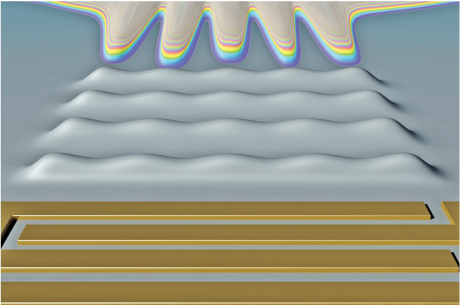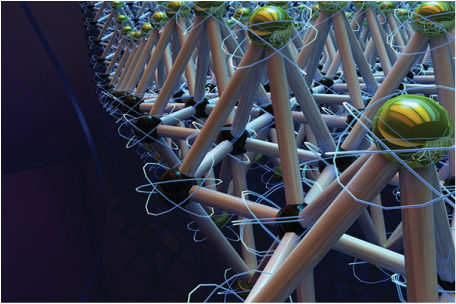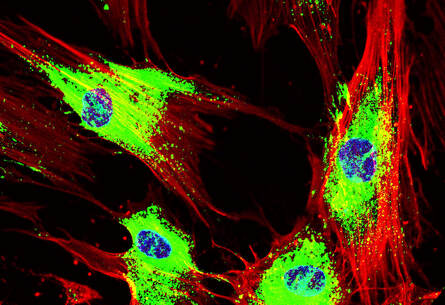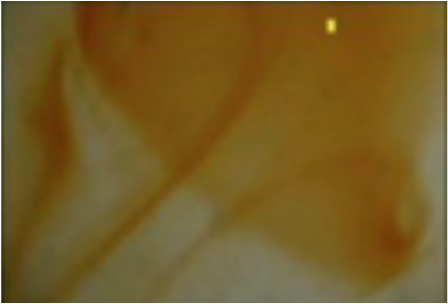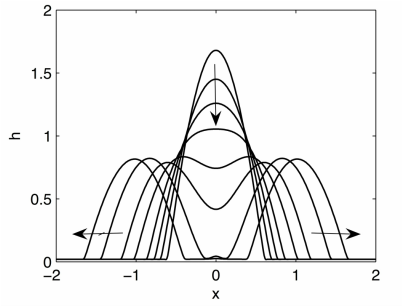|
Research at the Micro/Nanophysics Research Laboratory (MNRL) revolves around investigating the fundamental physicochemical phenomena associated with high frequency acoustical coupling into fluids as well as crystalline and biological materials at microscale and nanoscale dimensions using a host of advanced visualisation and characterisation equipment as well as analytical, semi-analytical and fully numerical techniques. In addition, we also seek to apply these fundamental studies to novel ways for actuating and manipulating both fluids and particles in microscale and nanoscale devices for various applications such as nanomaterials synthesis, drug delivery, high-throughput drug screening, biosensing, and tissue engineering, among other lab-on-a-chip type applications. Some of our research projects are listed below.
|
AcoustofluidicsDue to the fluid-structural coupling between the undulations along the substrate surface and the fluid above the substrate, substantial acoustic energy is transferred into the fluid, which can then be exploited to drive a wide range of microfluidic phenomena. Our research has resulted in the discovery of a wide range of new phenomena and we seek to elucidate fundamental theories that underpin the physicochemical mechanisms responsible for these observations. The localisation of the acoustic energy in a small region of the substrate produces extremely large surface accelerations (millions of g’s) allows us to drive extremely fast microfluidics, at least one to two orders of magnitude faster than currently available electrokinetic devices. Strategies for ultrafast microchannel pumping, drop transport, microcentrifugation, particle sorting and concentration, jetting and nebulisation are currently being developed for a wide range of biomicrofluidic applications including drug delivery, point-of-care medical diagnostics, biosensors and high throughput drug screening.
|
Phonon-Mediated Synthesis & Manipulation of MaterialsOur pioneering fundamental work has demonstrated the possibility not only for rapidly synthesizing bulk crystals (e.g., metal–organic frameworks (MOFs)) with novel morphologies and crystal orientations, and exfoliating bulk crystals into few-/mono-layer 2D quantum dots and large sheets, but also for manipulating quasiparticles in these 2D materials using acoustic fields. In the latter, we have demonstrated the possibility for reversibly modulating the trion to exciton transition and their subsequent transport and hence spatial separation within the material.
|
SonomechanobiologyWe show the possibility for eliciting a variety of cell responses for applications particularly in regenerative therapeutics (e.g., exosome biogenesis, stem cell differentiation and endothelial barrier modulation) through high frequency (MHz-order) mechanostimulation. Not only does the poration-free technique owing to the absence of cavitation facilitate greater retention in cell viabilities (>90%), the cell responses we observe are considerably different to those observed through static or low frequency (Hz- and kHz-order) mechanostimulation. Central to these processes are transient membrane dynamical dilatory effects and mechanosensitive ion channel activation induced by the high frequency mechanostimuli that facilitates modulation of secondary messenger (Ca2+) signalling, which we seek to understand in the quest to elucidate a universal mechanotransductive mechanism responsible for the observed phenomena.
|
Electrokinetically-Driven Microfluidics
Our work on electrokinetics primarily deals with that involving interfaces. We have pioneered the development of a high frequency (> 10 kHz) alternating current (AC) electrospray technique as well as a novel microcentrifugation technique driven by electrohydrodynamic air thrust (ionic wind). The former, which generates micron order electroneutral aerosol droplets, distinct from its direct current (DC) counterpart, has tremendous implications for drug delivery. Moreover, we have also shown its potential for the drug encapsulation in biodegradable polymeric particles for controlled release drug delivery as well as for the synthesis of polymeric fibers. The latter has been demonstrated as an efficient mechanism for driving intense micro-mixing as well as particle concentration (such as the separation of red blood cells from plasma). We have also developed theoretical and numerical models to describe electrowetting phenomena, which constitutes a highly controllable method for the transport of fluids in microfluidic devices using electric fields.
|
Interfacial Flows, Liquid-Liquid Dispersions & NanodropletsNumerical techniques are employed to investigate the dynamics of thin liquid films under the influence of Marangoni (surface tension gradients) and thermocapillary (thermal gradients) stresses in the context of wetting and dewetting in coating flows as well as the drainage of the interstitial liquid trapped between two coalescing drops in an immiscible liquid medium. We show that the latter process has implications on the control of phase inversion of liquid-liquid dispersions or emulsions. Additionally, we also demonstrate the possibility of generating surface nanodroplets via solvent exchange and exploit its possibility for a variety of applications.
|

